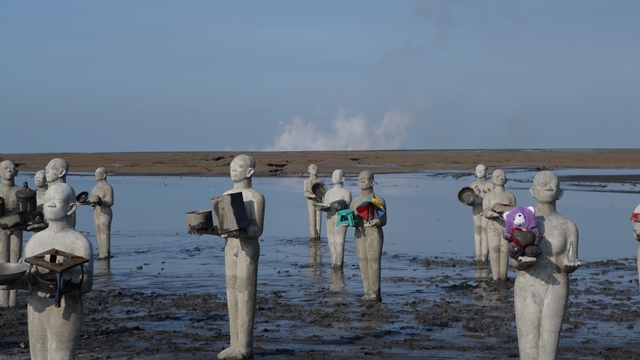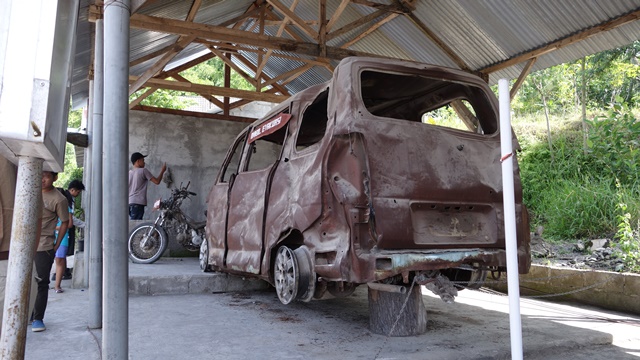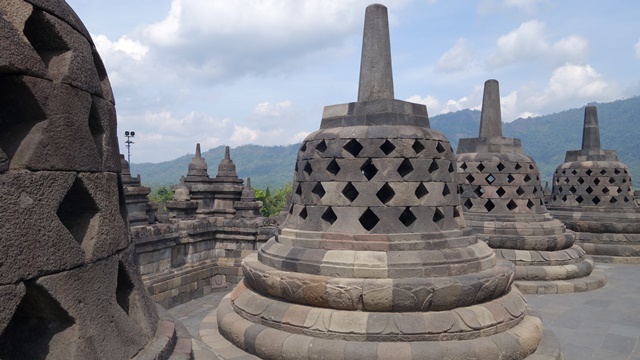Geologists reignited the debate Monday about whether to blame nature or humans for the devastating eruption nine years ago of an Indonesian mud volcano still oozing its all-consuming sludge today.
New analysis of underground gas levels measured at the time of the outburst point the finger to gas exploration -- not an earthquake -- as the trigger, a research team from the United States, Britain and Australia wrote in the journal Nature Geosciences.
"Taken together, our data strongly supports a man-made trigger," study co-author Mark Tingay from the University of Adelaide said in a statement.
The Lusi mud volcano erupted out of the blue on May 29, 2006, in the middle of a rice field in the Sidoarjo district, East Java.
It has destroyed numerous villages, factories, shops, and a highway. A dozen people were killed and about 40,000 have been displaced.
Lusi continues to ooze mud at a rate of some 30,000 to 60,000 cubic meters per day, according to disaster management authorities-- the equivalent of 12-24 Olympic-sized swimming pools of muck.
More than 6.5 square kilometers of Sidoarjo has been buried in up to 40 meters of mud, said the statement, with costs estimated at over US$2.7 billion.
The Indonesian government has erected about 20 kilometers of dykes, some 10 meters high.
Previous studies have alternated blame between the 6.3-magnitude Yogyakarta earthquake that struck two days before the outburst about 260 kilometers away, and the Banjar Panji gas well just 150 meters from the volcano's main vent.
Indonesian oil and gas company Lapindo Brantas, which was drilling there at the time, insists on its website that an investigation found no evidence to link its activities to the eruption.
"Lapindo Brantas Inc. geological experts believe the mud eruption was linked to seismic activity surrounding an earthquake two days earlier," it states, and points to financial assistance promised to Sidoarjo residents.
The company could not be reached for comment on Monday.
The latest research directly contradicts a study published in the same journal almost exactly two years ago, which blamed the quake for the muddy outburst.
That study, led by Stephen Miller at the University of Bonn in Germany, used computer modelling to determine that the quake would have liquefied a clay source of the mud deep underground, and caused it to be injected into a fault.
But the latest research found such a scenario "unlikely".
"Clay liquefaction is always associated with extensive gas release, and it is this large gas release that has been argued to have helped the mud flow upwards and erupt on the surface," said Tingay.
Except that his team's own analysis showed "that there was no gas release following the earthquake."
For a look at the gas content of the rock formation underneath the eruption, the researchers had relied on measurements from the Banjar Panji well, where detailed records of gas concentrations and composition were kept during drilling.
"We hope this closes the debate on whether an earthquake caused this unique disaster," added Tingay.
Jakarta Post








